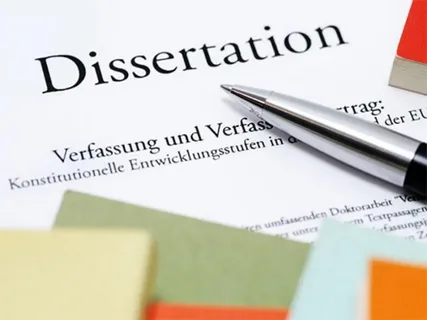Table of Contents
Introduction:
Editing, proofreading, and formatting play crucial roles in improving the overall quality of a dissertation. These processes go beyond mere grammar and spelling checks; they involve reviewing the structure, clarity, coherence, and formatting of the document. In this article, we will provide valuable tips and techniques for effective editing, proofreading, and formatting that will help elevate the quality of your dissertation. Additionally, we will explore the benefits of using dissertation proposal examples as a valuable resource in the writing process.
Understanding the Editing Process
Reviewing the Overall Structure and Flow
When editing your dissertation, it is important to assess the logical progression of ideas and arguments. Ensure that each section flows seamlessly into the next, creating a cohesive narrative. Effective use of headings and subheadings can aid in organizing your content and enhancing readability.
Checking for Clarity and Conciseness
Complex concepts should be simplified to ensure clarity for readers. Eliminate convoluted sentences, unnecessary repetition, and wordiness. Clearly articulate your ideas and arguments in a concise and straightforward manner.
Strengthening the Introduction and Conclusion
Crafting a compelling introduction with a clear thesis statement and research objectives is essential. The conclusion should summarize key findings and insights, demonstrating how they align with the research objectives stated in the introduction. Ensure there is a strong connection between the introduction and conclusion, reflecting the coherence of your dissertation.
Essential Proofreading Techniques
Correcting Grammar and Spelling Errors
Utilize grammar and spell-check tools to catch obvious errors, but also manually proofread your work to identify nuanced mistakes. Pay attention to subject-verb agreement, tense consistency, and other grammatical aspects that automated tools may miss.
Reviewing Punctuation and Capitalization
Thoroughly check punctuation marks, including commas, periods, and quotation marks. Verify consistent capitalization throughout your dissertation. Pay special attention to accurate placement of parentheses and quotation marks.
Verifying Accuracy of References and Citations
Cross-check all in-text citations with the reference list to ensure accuracy and consistency. Follow the formatting guidelines of the chosen citation style (e.g., APA, MLA). Verify that all reference details, such as authors’ names, publication years, and titles, are complete and correct.
Mastering Dissertation Formatting
Consistency in Formatting Style
Choose a specific formatting style and adhere to it consistently throughout your dissertation. Pay attention to margins, line spacing, font size, and typeface consistency. Ensure proper indentation and alignment of paragraphs and sections.
Organizing Tables, Figures, and Appendices
Label tables and figures accurately and consistently. Number them in the order they appear in your dissertation. Align captions and titles with formatting guidelines. Properly reference and integrate appendices within the document.
Proofreading Tables, Graphs, and Charts
Ensure accuracy and clarity in data representation. Verify correct labeling and formatting of table columns and graph axes. Maintain consistency in units of measurement and formatting conventions.
Utilizing Resources and Seeking Feedback
Tapping into Online Editing Tools and Resources
Various grammar checkers, style guides, and proofreading software can assist you in the editing and proofreading process. Online writing communities and forums can provide valuable feedback and advice. Explore writing blogs and websites for additional tips and guidance.
Seeking Feedback from Peers and Mentors
Share your dissertation draft with trusted colleagues or peers for review. Engage with your academic advisor or mentor, as their expertise can provide valuable guidance and suggestions. Consider professional editing services for comprehensive feedback and improvements.
The Benefits of Dissertation Examples
Dissertation proposal examples serve as valuable resources for structuring and organizing your dissertation. They provide guidance on refining research questions, methodology, and objectives. By reviewing successful proposal examples, you can gain inspiration and learn effective strategies for writing a high-quality dissertation.
Conclusion:
Enhancing the quality of your dissertation requires thorough editing, proofreading, and attention to formatting. By following the tips provided in this article, you can significantly improve the overall coherence, clarity, and professionalism of your work. Furthermore, utilizing dissertation proposal examples as a resource can serve as a valuable guide in the writing process. Remember, editing and proofreading are iterative processes, so allocate sufficient time for these tasks to ensure your dissertation meets the highest standards of quality.
Looking for professional assistance with your dissertation? Our dissertation writing services in the UK are tailored to meet your specific needs. From topic selection to research design, writing, editing, and proofreading, our team of expert writers is here to support you at every step. Contact us today to ensure your dissertation is of the highest quality and meets the standards required for success. Click here to get started on your journey to a remarkable dissertation!





